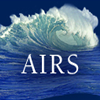
|
Melissa Moulton Research Scientist/Engineer Principal Affiliate Assistant Professor, Civil and Environmental Engineering mmoulton@apl.washington.edu Phone 206-221-7623 |
Research Interests
Coastal and Nearshore Processes, Environmental Fluid Mechanics, Remote Sensing, Beach Hazard Prediction
Biosketch
Dr. Moulton is a coastal physical oceanographer who studies the dynamics and impacts of rip currents, coastal storms, and inner shelf processes using remote sensing, in situ observations, laboratory experiments, and numerical models.
Department Affiliation
 |
Air-Sea Interaction & Remote Sensing |
Education
B.A. Physics, Amherst College, 2009
Ph.D. Physical Oceanography, MIT/WHOI Joint Program, 2016
Projects
|
Inner Shelf Dynamics The inner shelf region begins just offshore of the surf zone, where breaking by surface gravity waves dominate, and extends inshore of the mid-shelf, where theoretical Ekman transport is fully realized. Our main goal is to provide provide improved understanding and prediction of this difficult environment. This will involve efforts to assess the influence of the different boundaries — surf zone, mid and outer shelf, air-water interface, and bed — on the flow, mixing and stratification of the inner shelf. We will also gain information and predictive understanding of remotely sensed surface processes and their connection to processes in the underlying water column. |
15 Dec 2015
|
|
Publications |
2000-present and while at APL-UW |
Numerical simulation of sound-side barrier-island inundation and breaching during Hurricane Dorian (2019) Warner, J.C., and 9 others including M. Moulton, "Numerical simulation of sound-side barrier-island inundation and breaching during Hurricane Dorian (2019)," J. Geophysical Res., 130, doi:10.1029/2025JF008309, 2025. |
More Info |
1 Jun 2025 |
|||||||
|
Hurricane-induced morphological changes and associated community hazards along sandy, barrier-island coastlines have been studied primarily from the perspective of ocean-side attack by storm-driven ocean surge and large waves. Thus, our understanding of long-term barrier island morphological change focuses on beach erosion, overwash, and inlet formation. In contrast, outwash events with inundation from the sound side, such as one that occurred in Cape Lookout National Seashore, North Carolina, USA during Hurricane Dorian (September 2019), are understudied. Studying such events can improve understanding of barrier island response and stability for a broader range of conditions. Here, we model the hydrodynamics and morphological evolution of a barrier island using a coupled wave-current-sediment transport modeling system. Wind-driven surge in Pamlico Sound led to overtopping from the sound side, which eroded outwash channels and transported sediment seaward into the nearshore. Simulations reproduce the channel features observed with aerial imagery and provide information not available from the remote-sensing observations, including channel depths (>2 m) and the fate of the eroded sand. We found that >99% of the eroded sand was deposited in the nearshore, within 1,000 m of the shoreline in depths <10 m, suggesting that the deposited sediment remains available for littoral transport and beach recovery. Simulations with combinations of coarse or fine sediment and vegetated or unvegetated landcover indicate that channel position did not vary with grain size or vegetation, while volume of erosion and channel morphology were more responsive to variations in grain size and less responsive to presence of vegetation. |
|||||||||
Adaptive governance during an unprecedented marine heatwave: Case study from the Florida Keys National Marine Sanctuary Henry, H., and 15 others including M. Moulton, "Adaptive governance during an unprecedented marine heatwave: Case study from the Florida Keys National Marine Sanctuary," J. Environ. Plann. Manage., EOR, doi:10.1080/09640568.2025.2504516, 2025. |
More Info |
29 May 2025 |
|||||||
|
In 2023, the Florida Keys National Marine Sanctuary (FKNMS) faced its most severe marine heatwave on record, lasting from June to October. This event necessitated the first-ever mass evacuation of corals as part of the ongoing efforts under the Mission Iconic Reef project, aimed at restoring the coral reefs after decades of decline. This study examines how FKNMS stakeholders, including managers and conservationists, responded to the heatwave. Through interviews with stakeholders, our findings highlight a rapid coordinated effort that mitigated some immediate impacts of the heatwave. Stakeholders described that despite these efforts, the marine heatwave had significant adverse effects, leading to coral and fish mortalities, increased human-wildlife conflicts with sea turtles, and declines in the health of birds and dolphins. This study underscores the critical need for enhanced understanding of, and preparation for, emergency events in marine conservation, particularly as climate change increases their frequency. |
|||||||||
Modeled surf-zone eddies on a laboratory scaled barred beach with varying wave conditions Nuss, E.S., M. Moulton, S.H. Sutara, and C.M. Baker, "Modeled surf-zone eddies on a laboratory scaled barred beach with varying wave conditions," J. Geophys. Res., 130, doi:10.1029/2023JC020549, 2025. |
More Info |
1 Jan 2025 |
|||||||
|
Key Points |
|||||||||
In The News
|
Rip currents are dangerous for swimmers but also ecologically important The Conversation Scientists are working to understand these 'rivers of the sea'. |
21 Jul 2023
|




